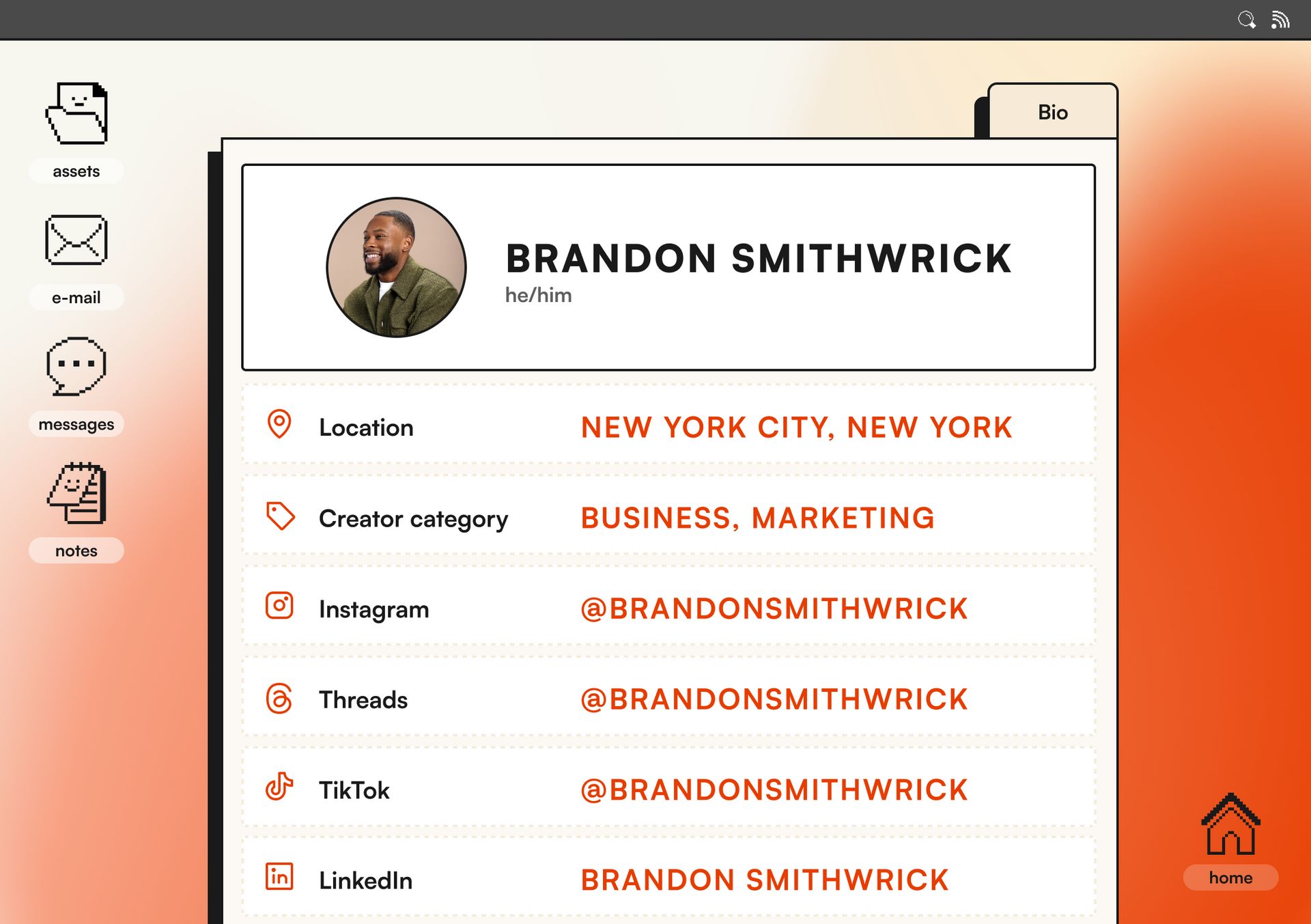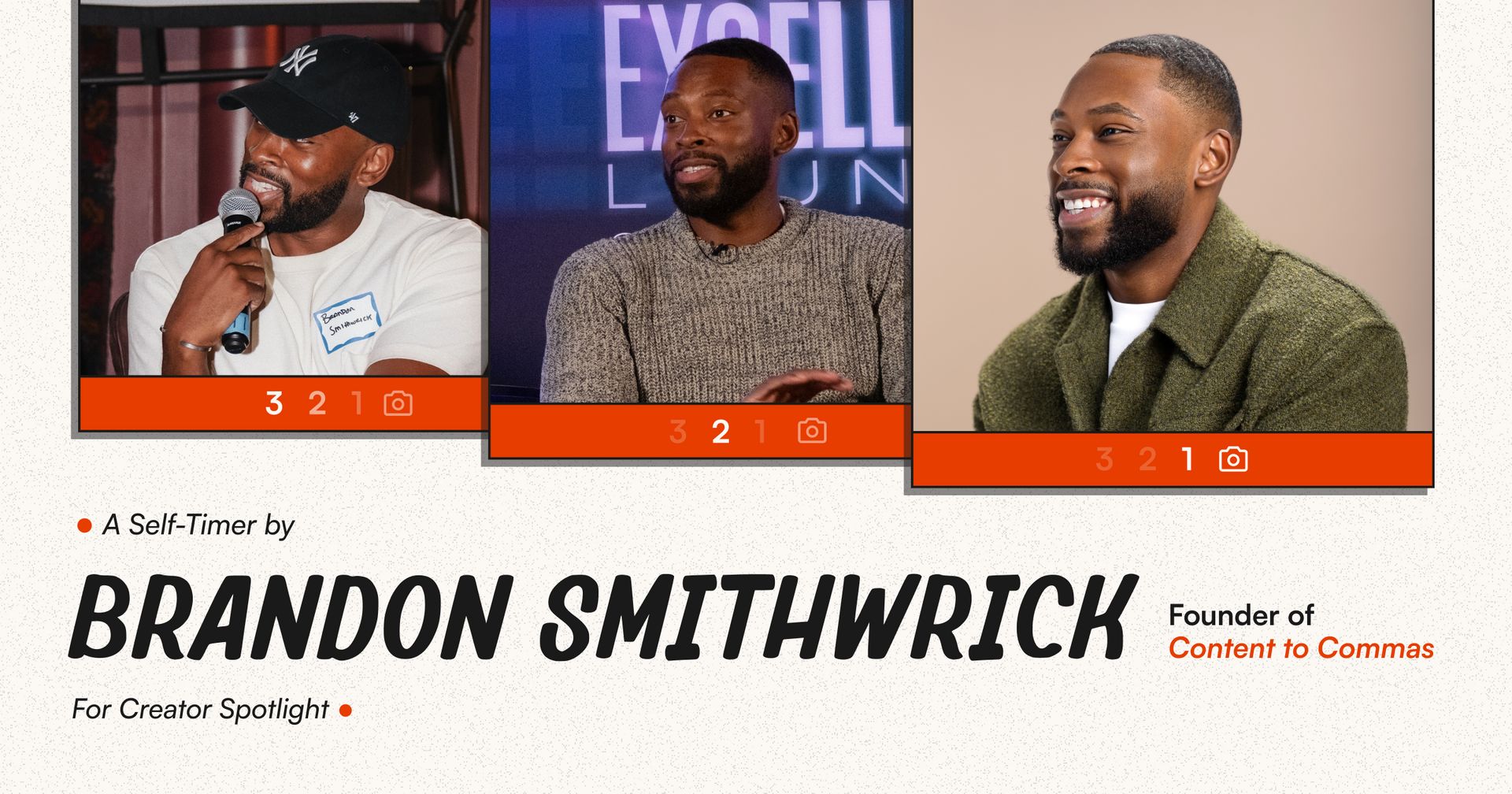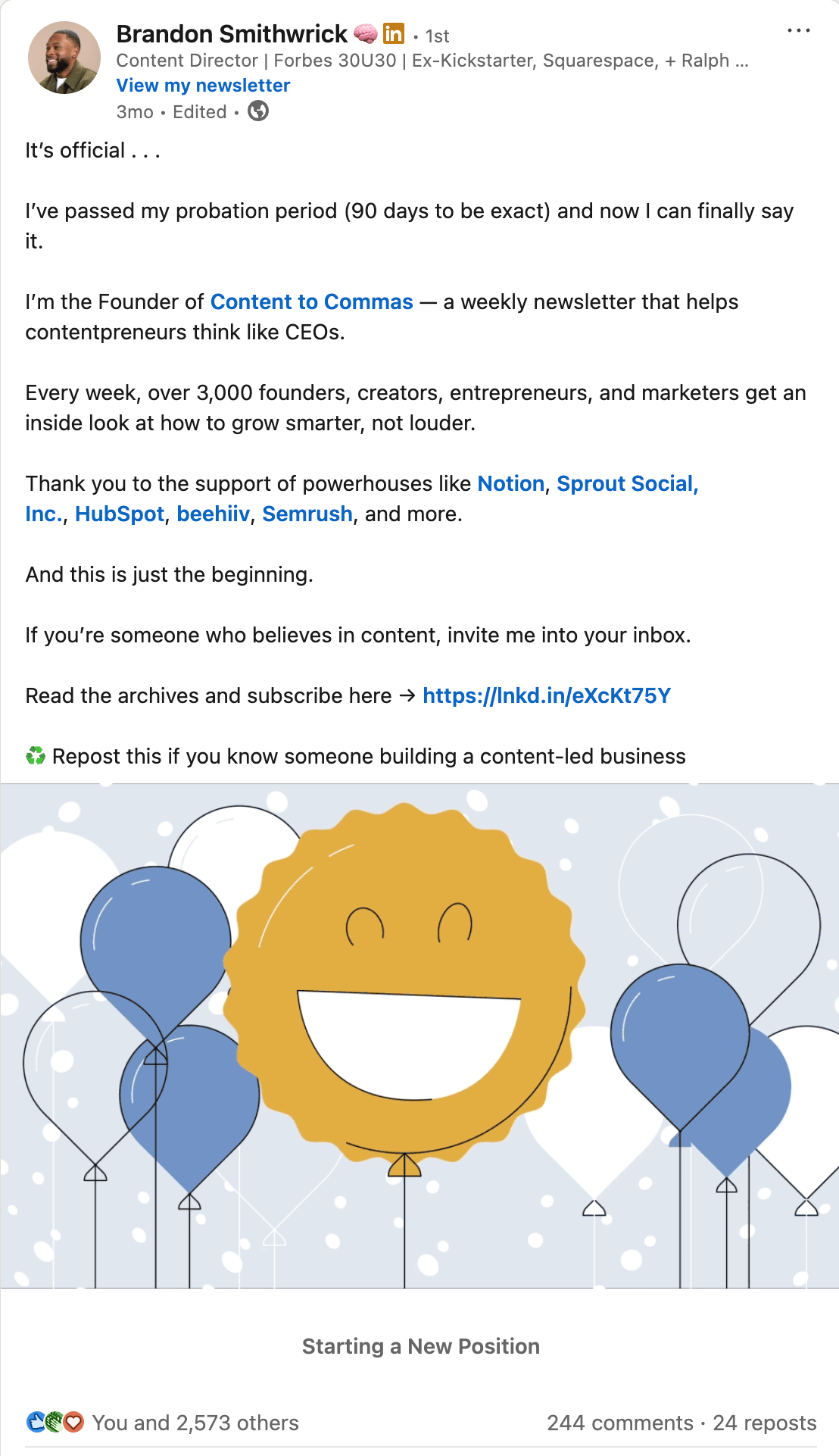Welcome to Self-Timer — our monthly series featuring a creator’s greatest hits, hardest lessons, and tactical growth strategies.
This month's guest is Brandon Smithwrick, a former content and creative marketing director recently turned full-time creator who shares practical strategies on content, growth, and monetization to help creatorpreneurs scale smarter.
In this issue:
🎯 How Brandon built his unique positioning on LinkedIn
💰 His $30K/month revenue breakdown
📱The post that got him 2,000 subscribers in one day
— Natalia Pérez-González, Assistant Editor
The #1 platform for newsletters. Period.
beehiiv is the one platform that does everything for your newsletter. And they do mean everything:
A newsletter editor that makes your words shine like they belong on a bestseller list
A no-code website builder that doubles as your 24/7 subscriber magnet
Revenue tools that make earning money so easy it feels like cheating: ads, referrals, and paid subs
If you’ve got a newsletter (or even just the idea for one), beehiiv is the ultimate no-brainer.
Start for free on the absolute best platform for newsletters. No credit card required.
This is an advertisement.

Brandon Smithwrick is a New York-based content creator and founder of Content to Commas, a newsletter and media company for creator-entrepreneurs building businesses around their content and ideas. He’s built an audience of 81K+ across platforms.
A former content and creative marketing director at Ralph Lauren and Squarespace, he’s leveraged LinkedIn content creation into a six-figure creator business. He has partnered with brands including Adobe, Amazon, and Hootsuite, and his newsletter grows by approximately 1,000 subscribers per month through organic content alone.

Subscribe to Brandon’s career resource newsletter, Content to Commas.
Learn more about Brandon.

The below answers have been edited for tone and clarity. Bolding and italics our own.
Creator Spotlight: How did your creator business come to be? What was the initial vision, and how has it evolved?
Brandon: I started posting on LinkedIn with one goal: to get noticed by recruiters. That was it. Over time, my content improved, my voice became clearer, and people started following along. Before I knew it, I was partnering with brands like Adobe, Notion, Amazon, and Hootsuite, speaking on panels, and going on brand trips from Canva’s conference to Cannes Lions.
It went from posting for a job to building a creator business that pays the bills every week. Now, it’s a small but tight team: Me, my wife, who manages my deals and calendar, an accountant, and a part-time video editor. Earlier this year, I also launched Content to Commas, a newsletter designed for hybrid creator-entrepreneurs like myself who want simple playbooks for content, growth, and monetization. The idea actually came from a speaking panel where I was workshopping thoughts out loud — a few months later, that concept became the business.
CS: How do you approach content planning and creation?
Brandon: Most of my ideas come straight from real conversations with creators, founders, and marketers, or from being at events around the city. If something comes up that feels useful, I’ll drop it into my Notion ideas page right away. I’ve even written things down mid-workout at the gym just so I don’t lose them.
Twice a week, I block time to review those notes and either expand them into posts or schedule them. A lot also comes from my newsletter. I’ll pull out smaller lessons and repurpose them throughout the week. Sometimes I’ll use ChatGPT to help me break it down, and I use SproutSocial to schedule everything.
I keep the process lean. I write and schedule my own posts, then share them across LinkedIn, Instagram Stories, Threads, my IG broadcast channel, and video depending on the format.

CS: What's your strategy and approach to audience growth?
Brandon: I refused to play into the “cringe” LinkedIn was known for. At the time, the platform felt overly stiff and professional, so I leaned the other way. My profile picture was me in a beanie, and my posts came straight from the lessons I learned running social at Ralph Lauren and Squarespace. Instead of vague advice, I shared real strategies, challenged the gurus, and spoke in a way that felt approachable.
That honesty clicked, and it’s still the backbone of my content today.
I’ve found that the less polished content often performs the best. My style is direct (write a strong hook, share the insight, and move on). That approach built trust, which is why when I do brand partnerships, it’s always with tools I’ve tested, use regularly, or genuinely believe in. The audience can tell the difference, IMO.

CS: What single piece or content series has performed best for you?
Brandon: This post announcing the start of my full-time creator journey pulled in around 150,000 impressions, but what stood out was the impact: I drove close to 2,000 new subscribers in a single day by leaning into a format people already recognize — the promotional announcement style you see constantly on LinkedIn. People are naturally curious (and a little nosy), so they stop scrolling when they see it.
Instead of using it for a generic update, I flipped it to highlight my own business. You don't always need to reinvent the wheel. If you can use formats people are already familiar with to frame your big announcements, you'll cut through the noise and actually get noticed.
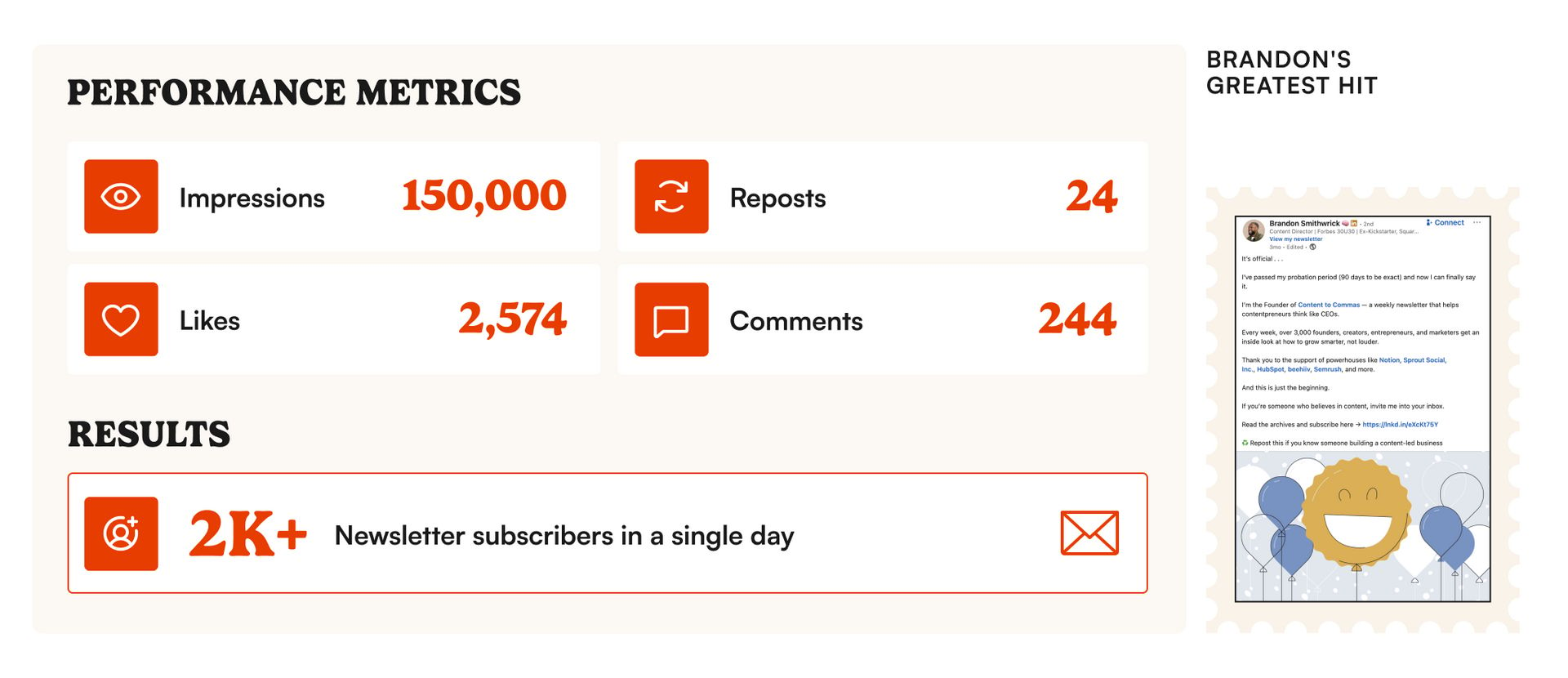

Over the last six months, Brandon has averaged approximately $30,000 per month, with two months exceeding $40,000.
His revenue model prioritizes brand partnerships and sponsorships, which consistently generate at least $20,000 per month, supplemented by paid usage/UGC ($2,000–$5,000), affiliate marketing ($300–$800), and limited consulting work.
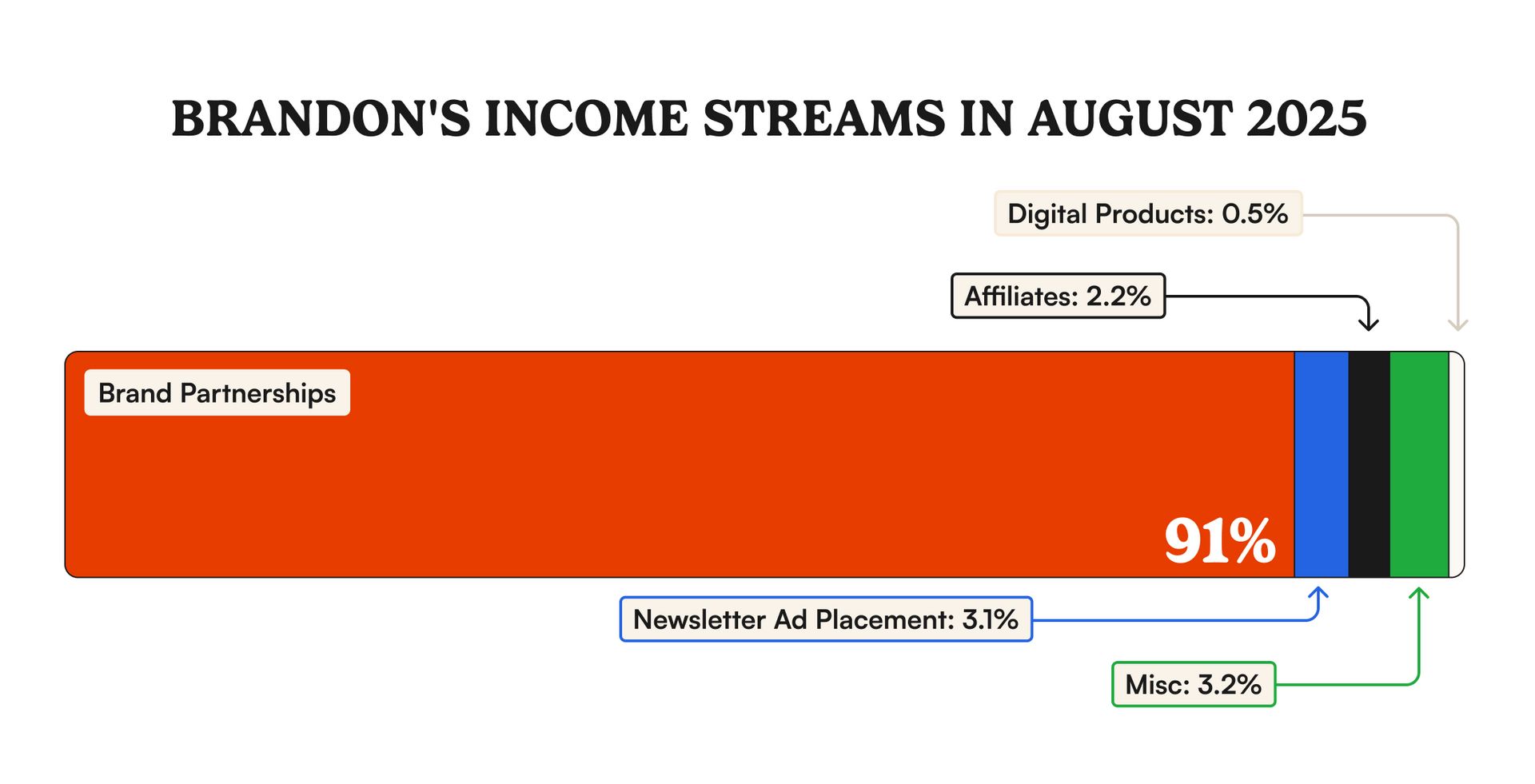
His first dollar as a creator: The first dollar I made as a creator came from a LinkedIn post for a video app. I honestly had no idea what to charge. You could Google Instagram, TikTok, or YouTube rates, but there was nothing available for LinkedIn. I had about 3,000 followers at the time and ended up charging $300-$400. That was the first invoice I ever sent for a partnership. After that, I started testing different numbers to see what brands would accept or push back on, and that’s how I began building my rates.
The most he’s made from a single piece of content or deal: $20,000 with one brand. More recently, I signed a contract for $18,000, so it’s not far off. My goal is to surpass that number by the end of the year with some of the deals I’m currently negotiating.
Monetization strategy he’s found most effective: The most effective strategy has been bundling. Many of my deals now include a newsletter placement plus LinkedIn, and sometimes with Instagram or TikTok. Paid ad usage has also grown rapidly, with brands returning to extend their contracts. Bundles make it easier for brands to say yes, while letting me scale without spreading myself too thin.

CS: Tell us about a time you’ve experienced a setback or failure, whether while building and managing your business or in your creator journey as a whole?
Brandon: Burnout. It hit me right when I was offered that large $20K deal. At the time, I was juggling a 9–5, planning my wedding, and running my business. I completely shut down and almost ghosted the brand for a month. Eventually, I had to be honest with them and admit I was burnt out. Thankfully, they appreciated the transparency, and we still moved forward, but it could’ve gone very differently.
That experience forced me to establish systems and boundaries, enabling me to manage the volume of work I take on now. It also taught me to notice the early signs of burnout, when I start slipping on small things, I know it’s time to pause, reset, or get help.
My advice to creators is simple: stop trying to do it all. You don’t have to edit every video or manage every detail yourself. Hire help where you can, and if spending money buys you peace, it’s worth it.

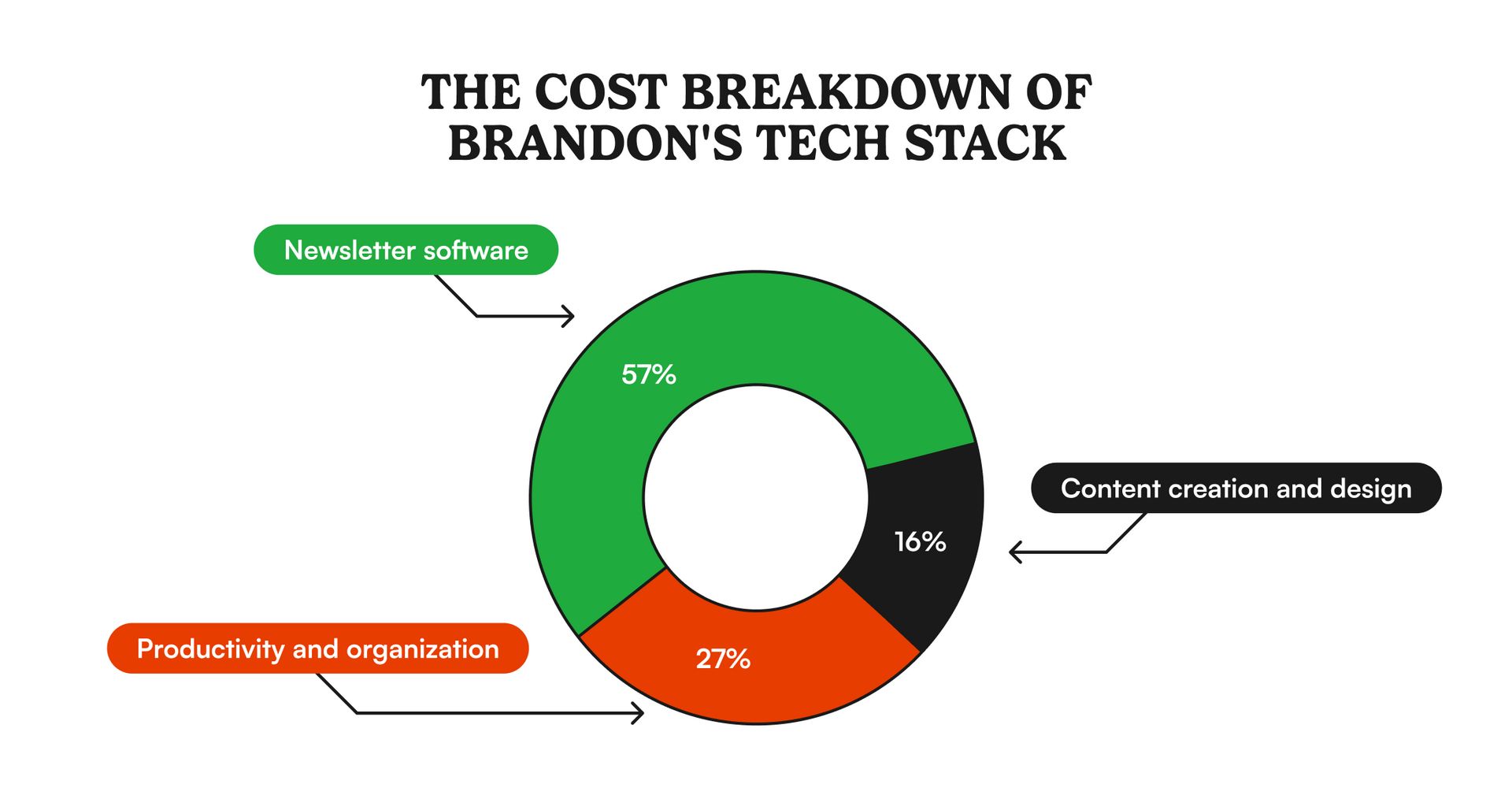
Brandon’s tech stack totals up to $2,455.88 per year. Here’s how he powers his business:
Newsletter and social media management:
beehiiv: $1,200 / year
Sprout Social: $0 / year via partnership
Content creation and design:
Canva: $0 / year via partnership
Captions: $119.88 / yr
ChatGPT Pro: $228 / yr
Productivity and organization:
Sequence: $348 / yr
Granola AI: $216 / yr
Notion: $0 / yr

One newsletter he’ll never miss…
One creator who inspires him…
A podcast he regularly listens to…
Any books, courses, or resources that have significantly impacted his creator journey…
Ali Abdaal’s productivity tips




